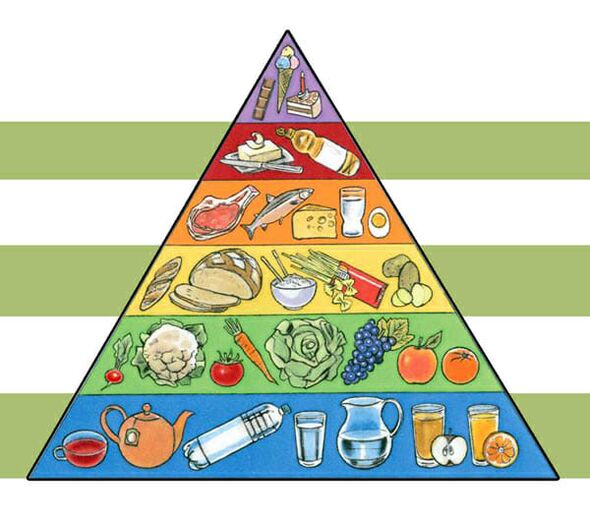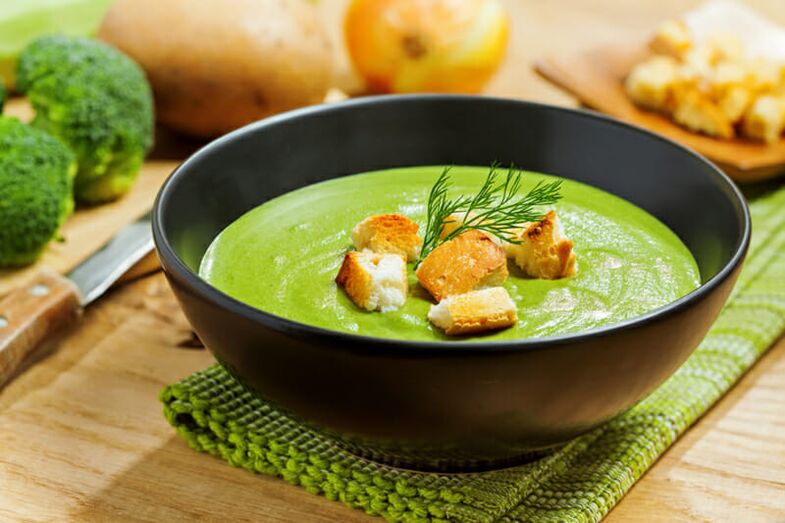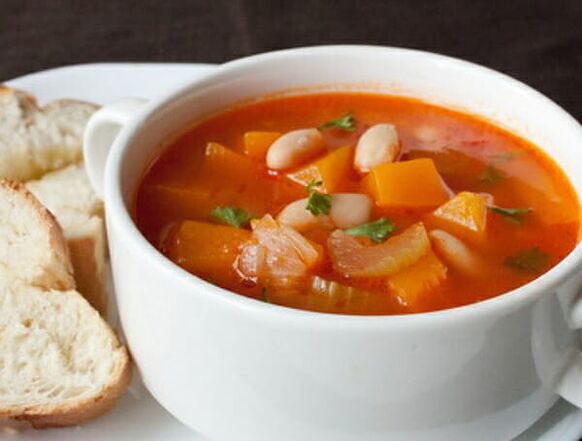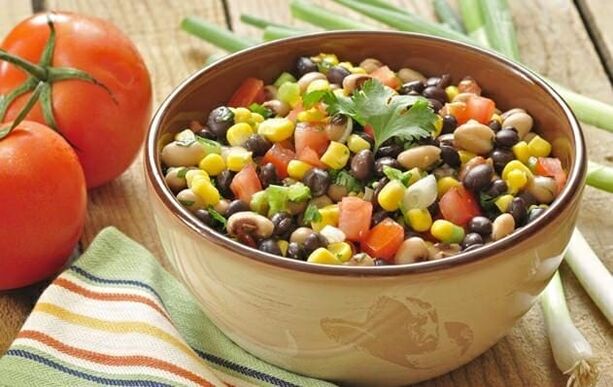Proper nutrition is the key to health, beauty and harmony for years to come. If most diets force a person who loses weight to experience maximum limitations and discomfort, in this case this does not happen. The main thing is to correctly design a menu with a balanced food set. At the same time, the lost pounds do not return, as the body is completely rebuilt into a new diet and diet.
Is It Possible To Lose Weight With The Right Food?
It is impossible to choose a diet for weight loss that would be just as effective for everyone. This is due to the individual characteristics of each organism. The advantage of proper nutrition is that there are no strict restrictive frameworks and it is possible to independently design a menu from a large list of permitted products.
The PP system for weight loss is ideal in all aspects. As a result, fat stores are depleted, but energy potential and physical stamina increase. According to the recommendations of nutritionists, you should constantly follow a similar diet, which helps maintain the health of the body.
Nutrition plan means the correct ratio of nutrients, vitamins and minerals needed for the full functioning of the body.Furthermore, you can include healthy food that meets the added need for each ingredient. Sometimes disguised as a craving for harmful foods.
An alternative replacement is presented in the table:
| Desired food | What is missing in the body | Proper product supplier |
| Fatty foods, sweet soda | Calcium | Dairy products, nuts and seeds, legumes |
| Confectionery, baked products with flour | NITROGEN | Beans, nuts, beans |
| Chocolate, cocoa | Magnesium | Cabbage, baked potatoes, legumes, nuts |
| CONFECTIONERY | Slow carbohydrates, chromium | Porridge, fruit |
| pickles | Calcium, sodium chromite | Cheese, cottage cheese, seaweed, seaweed |
To lose weight on PP, you need to consume fewer calories than physical expenditure requires. There are 2 options:
- eat right, in line with your daily calorie intake and increase physical activity;
- reduce your usual calorie content.
You can not make the diet poor, trying to get rid of the hated pounds as quickly as possible. The optimal daily calorie content is 1100-1200 kcal.
The most noticeable results were observed in people who are overweight, who previously neglected the basics of proper nutrition.Depending on all the rules in PP, you can lose up to 4-6 kg per month.
Basics of PP
The principles of good nutrition are not very complicated, but they work perfectly. Due to the balance, fat deposits gradually burn out and physical shape returns to normal.
For the intensity of the process, it is recommended not to neglect sports and lead an active lifestyle.
PP Basics to help you create your own weight loss menu:
- They completely reject junk food: semi-finished products, carbonated drinks, cakes, sausages, chips, fried and fatty foods, alcohol.
- Limit salt intake.
- Recipes are made with a balanced set of fats, proteins and carbohydrates, with the mandatory inclusion of fiber and vitamins.
- They are eaten often, but in small portions.
- In the morning, on an empty stomach, drink a glass of cold water to start digestion properly.You should drink up to 2 liters of clean water a day without gas.Moreover, they drink green tea, herbal teas, mineral water.
- Do not miss breakfast.
- The caloric content of dishes is calculated daily.
- Chew food slowly, without being distracted: this allows you to feel full faster.
- Dishes are boiled, baked, boiled or steamed. The rash is unacceptable.
- Emphasize fresh fruits and vegetables.
- Eliminate fast carbohydrates and replace them with slow ones: cereals, whole grain breads, sweetened fruits, berries, honey, etc.
- The total amount of animal protein consumed is calculated as a ratio of 1 gram per 1 kg of body weight.
Carbohydrate food is consumed in the afternoon, protein - in the second half of the day. Number of main meals per day - up to 5 times, at intervals of 4 hours, at the same time, the last - at least 3 hours before bedtime. A maximum of 2 snacks (kefir, nuts, vegetables or green apples) are allowed.
List of foods
The list of allowed and forbidden foods for weight loss is presented in the table:
| Allowed | Prohibited | Allowed in limited quantities |
|---|---|---|
|
|
|
Menu for the week
This technique does not imply a strict framework. It includes whole foods based on key principles and elimination of harmful ingredients.

The importance of products is determined by the food pyramid. It consists of six food blocks: five of them are needed for daily consumption, the sixth should be minimized.
Each individual chooses dishes based on personal taste preferences. Weight loss menus are based on the physiological parameters and characteristics of a person.
To learn how to control your diet without daily calorie counting, it is recommended to keep a diary at the beginning. It records all the food eaten during the day, which helps in analysis. To get started, follow an example menu for each day.
The main menu for the week is suggested in the table:
| Day of the week | BREAKFAST | dinner | dinner | Snacks (lunch, afternoon snack) |
|---|---|---|---|---|
| On Monday | Oatmeal on water |
|
|
|
| Tuesday |
|
|
|
|
| Wednesday |
|
|
|
|
| Thursday | Cottage cheese with fruit or low-fat sour cream |
|
|
|
| Friday | Mix fruits with natural yogurt |
|
|
|
| Saturday | Millet porridge on water |
|
|
|
| Sunday | Poor rice porridge |
|
|
|
Recommended drinks:
- Mineral water still;
- freshly squeezed fruit juices;
- green tea with lemon;
- sugar-free coffee;
- herbal infusions.
When designing a diet for a month, they adhere to basic principles. The recipes are the same, based on approved foods.
To get a tangible result, you need to be patient and not deviate from the intended goal.
For men
Men differ from women in metabolism, energy expenditure, and greater muscle mass.Consequently, the PP rules will be slightly different.
Points to consider when designing a menu:
- They include more protein, which is needed to maintain muscle tone. For vegetarians, legumes (excluding beans and lentils), potatoes, dairy products, mushrooms and nuts will serve as a complete alternative to meat.
- Products that promote testosterone production are included in the menu: meat, honey, eggs, pollen, a little alcohol (in the absence of medical contraindications).
- Daily calorie intake is observed - 2300-3200 kcal, which depends on lifestyle: sedentary or active, with intense exercise.
Also, representatives of the stronger sex need:
- zinc: apples, dates, figs, raspberries, liver, lemons;
- selen:pumpkin seeds, nuts;
- phosphorus:egg yolk, fish, bran.
Men can not do without vitamin E.
Approximate daily diet:
- Breakfast:cereal porridge, boiled meat, mint tea and lemon.
- Lunch:toast bread toast, cottage cheese, juice.
- Dinner:potato soup without potatoes, boiled sea fish, spring salad, strong wheat pasta.
- Afternoon snack:plain yogurt, fruit.
- Dinner:herb cottage cheese and fresh cucumbers.
It is recommended to give up soy, beer and instant coffee - these are products that promote the production of female hormone.
For girls and women
In women, the daily calorie content varies between 1700-2200 kcal, the extreme figure is acceptable only for athletes.Despite this, the diet can become just as varied and delicious.
Elements that the female body needs at any age:
- Calcium(excreted intensively during pregnancy and after 40 years): cottage cheese, cheese, milk, tofu, almonds, lettuce.
- Iron(lost during menstruation, and estrogen interferes with its absorption): liver, dried apricots, prunes, dried pears and apples, cocoa, rose infusion, pumpkin seeds.
- Vitamin C(necessary for the normalization of the nervous and immune system, collagen production): citrus, strawberries, kiwi, sea buckthorn, bell pepper, rose hips.
- Folic acid(a special need arises during pregnancy, as the substance excludes the development of pathologies in the fetus): spinach, parsley, lettuce, all kinds of cabbage, beets, watermelon, avocado, peaches, lentils and green peas, tomatoes, nuts.
Up to 25 years old
Girls are encouraged to focus on soy products, wheat germ and cranberry juice: theyprevention of diseases of the genitourinary system.
Indicative menu for the day for young women:
- Breakfast:omelette, fresh tomatoes, freshly squeezed fruit juice or natural coffee.
- Lunch:almonds and plums.
- Dinner:broccoli puree soup, vegetable and bean salad, roasted turkey, green tea.
- Snack:green apples.
- Dinner:boiled shrimp, avocado, tofu with herbs.
After 30 years, women need to be especially careful about food in order to maintain youth and beauty for a long time, despite age-related changes. It is at this age that many begin to gain weight or suffer from fatigue. Both cases are caused by a lack of vitamins and nutrients in the body.
After 30 years
At the age of 30-35, it is recommended to eat partially and little by little, but not to let the feeling of hunger. . . The diet is based on protein foods, vegetables and fruits. It is necessary to maintain muscle mass, normal functionality of the cardiovascular, endocrine, digestive and other systems.
More are added to the basic products in PP:
- seafood;
- oily fish (a source of omega-3 acids);
- greenery;
- cabbage (helps with edema);
- quail eggs;
- orange and red vegetables;
- mango, kiwi, avocado.
After 40 years
After 40 years, the risk of developing many chronic diseases increases, as immunity weakens. At this age, they adhere to a balanced diet without rigid diets for weight loss.It is recommended to limit the intake of black tea and coffee (2-3 cups per day). It is advisable to eat more bananas: they have a beneficial effect on heart function. Prunes, sauerkraut and seaweed will help cleanse the gut of pathogenic bacteria.
During pregnancy and breastfeeding
Menus for holding a baby and after birth are not very different. The main thing is to consume more calcium and exclude food that contains additives and various artificial colors - otherwise, an allergic reaction is possible for both mother and baby.
Basics of nutrition:
- balance;
- low amount of carbohydrates;
- complete absence of alcoholic beverages.
To lose weight, nursing mothers are prohibited from taking laxatives and herbal medicines, as well as following a diet.
List of foods allowed and forbidden during lactation:
| Prohibited | Allowed |
|---|---|
|
|
For children and adolescents
When designing a healthy diet for children, a number of nuances are taken into account. First of all, this is age, as the body is constantly growing, and the demand for energy is changing.
Optimal daily calorie intake for age periods:
- up to 3 years - 1500-1600 kcal;
- 3-5 years - 1900 kcal;
- up to 8 years - 2400-2500 kcal;
- 8-16 years-2600-3000 kcal.
The baby's body constantly needs:
- carbohydrates - a source of energy;
- protein - needed to strengthen muscles;
- calcium - good for bones;
- a complete complex of vitamins, micro- and macronutrients- to stimulate brain activity.
Since a child has a faster metabolism than an adult, sweets are not dangerous. Cholesterol, on the other hand, is involved in cell formation. It does not follow that children can eat everything and in unlimited quantities.
If you are overweight, it is worth reviewing your diet according to the PP program:
- Establish a specific eating pattern, preferably by the hour.
- Do not force the child to eat.
- They use partial foods with healthy foods: apples, crackers, yogurt, fruit, honey, berries.
- Protein meal is served for lunch. It can be boiled chicken, boiled kitten, cottage cheese, peas or oatmeal.
- Make sure you include all dairy products in your diet.
- Sweets are dosed and given strictly after the main meal.
- Excludes chips, fast food and other harmful products.
- They learn to drink water.
Example menu for the day:
- Breakfast:apple puree, compote.
- Snack:bananas, biscuits for children.
- Dinner:chicken soup with vegetables, meatballs, tomato and cucumber salad, fresh fruit.
- Afternoon snack:cheese sandwich.
- Dinner:rice porridge, milk or kefir.
For the family
Choosing an acceptable diet for the whole family is much more difficult, as you will need to consider the preferences and characteristics of each of its members. The following factors are considered:
- Physical activity;
- the presence of any health problems, including obesity;
- age category;
- individual taste desires.
Men are more likely to be exposed to added stress, so they need more calories. Over a measured period of time, fatty meats and butter are excluded from the diet. Weight Loss Families should avoid unhealthy, high-calorie foods.In case of pathologies of the gastrointestinal tract, dietary foods are prepared. Breakfast for everyone should be complete.
From the table you should get up with a slight feeling of hunger, as satiety does not come immediately.
The menu is composed for a week, but it is not worth preparing in advance: fresh food is healthier. This is especially true for salads, snacks and desserts.
A complete list of products for the week for the whole family:
- cereals: oatmeal, buckwheat, rice;
- pasta;
- chicken breast;
- a fish;
- eggs;
- cheese;
- vegetables and fruits;
- muesli;
- milk and sour milk products;
- greens
It is more rational to describe in detail the products needed for the week and make a list so as not to buy anything superfluous in the store.
For athletes
Healthy eating and sports are two inseparable components of health. To gain a beautiful and fit body, it is not enough to follow a diet and follow the number of calories burned in exercise.
During intense sports, muscle building and building occurs, therefore, the protein supply from outside is important. In addition to cottage cheese, the menu should include nuts, meat and eggs. Furthermore, special protein supplements are taken.
Simple carbohydrates (sugar, sweets, honey) should be avoided and replaced with complex ones (whole grain breads, legumes, whole grains, fruits and vegetables). They are consumed 2 hours before classes and 30 minutes after. They eat completely in 1. 5 hours, mostly protein.
Athletes should also consume healthy fats: fish, flaxseed, seafood, nuts, vegetable oils.
They are guided by the following power scheme:
- Breakfast:oatmeal in milk, some eggs.
- Lunch:protein cocktail.
- Dinner:vinaigrette, fish or meat.
- Afternoon snack:a piece of cottage cheese.
- Dinner:rice meat porridge, cottage cheese.
- Late snack:a glass of milk or kefir.
Recipe
The dishes used in PP are usually simple and easy to prepare at home, without taking much time, and they also include cheap and available ingredients.
The main thing in the cooking process is not to overdo it with artificial salt and spices.
Broccoli cream soup

Delicious and nutritious puree soup can serve as a complete lunch.
For cooking you will need:
- broccoli - 500 g;
- onion - 1 head;
- cream (10% fat) - 120 ml;
- soda, salt - a pinch;
- crackers for taste.
Preparation:
- Boil the broccoli in a little salted water until soft.
- The remaining liquid is drained, but not completely.
- Using a blender, beat until smooth.
- Add the cream.
- Let simmer again.
Decorate the top with crackers or seeds.
Celery soup

The necessary food composition for a hearty and simple dish:
- celery root - 200-220 g;
- white cabbage - 300 g;
- carrots - 5 pieces; ;
- onion - 5-6 pieces; ;
- tomatoes - 4-5 pieces; ;
- pepper zile - 1 pod;
- green beans or asparagus - 350-400 g;
- tomato juice - 1. 5 l;
- fresh herbs for decoration.
Preparation:
- Celery and all vegetables are chopped into strips. Pour into a pan and pour the liquid.
- Put it on the fire and wait for it to boil. Cook for 10 minutes, stirring occasionally.
- Turn down the heat, add the chopped greens, cover with a lid and simmer for another 7-8 minutes.
Before use, the soup can be wiped with a blender, which promotes better absorption of nutrients.
Vegetable salad

For a diet salad you will need:
- red and white beans - 200 g;
- tomatoes - 1-2 pieces; ;
- lettuce leaves - 50 g;
- corn - 150 g;
- parsley and dill - 1 bunch;
- wine vinegar or lemon juice - 1 tbsp. l
Preparation:
- Pre-boil the beans until soft.
- Add the diced tomatoes.
- Add chopped greens, lettuce and corn kernels there.
- Season with vinegar or lemon juice.
- Flavor and pepper.
It is not recommended to take canned vegetables - preferably fresh or frozen.
Barley porridge with mushrooms
Barley with mushrooms can be cooked easily and quickly in a slow cooker, while it turns out to be tender and satisfying. The recipe is suitable for people who are losing weight and vegetarians.
Ingredients:
- pearl barley - 200 g;
- water - 3. 5 cups;
- samples - 0. 5 kg;
- onion - 1 piece;
- vegetable oil - 20-30 ml;
- salt and pepper.
Preparation:
- The cereals are washed, poured with water and soaked for 5-6 hours or overnight.
- In the morning, the juice is drained, the pearl barley is put into the bowl of many dishes and fresh water is poured.
- Finely chop the onion, cut the mushrooms into plates and lightly fry in vegetable oil.
- Add the frying to the bowl, salt and pepper.
- Set the desired mode.
- After the final signal, open and mix.
When serving, it is permissible to add a piece of butter to each portion.
















































































